Plant Breeders Stage a Dogwood Revolution, Creating Hardy Varieties That Sparkle
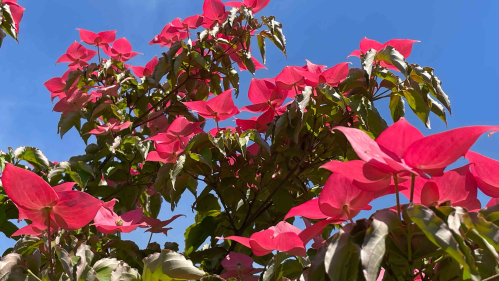
Decades of Rutgers research lead to colorful, sun-reflecting and disease-resistant trees
With the advent of Memorial Day, the treescape in the Northeast has turned mostly green again, the ornamentals’ early spring flowers long dried and scattered.
But there’s an exception.
The vivid pink Scarlet Fire® dogwood tree, produced through decades of research by Rutgers University-New Brunswick plant breeders, is just starting to bloom.
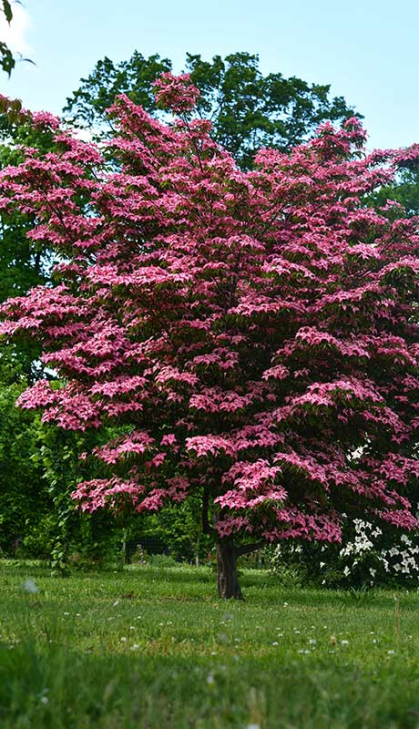
Introduced to consumers through commercial nurseries about five years ago, the tree has been purchased and planted in numbers now estimated to be in the hundreds of thousands. The popular, award-winning Scarlet Fire® trees are now coming into maturity throughout the United States, achieving their full height and width, the shimmering substance in their blooms catching the sun and giving the variety its Rutgers-themed name.
And the story doesn’t end there.
Thomas Molnar, the Rutgers plant breeder who led the development of Scarlet Fire®, today formally introduced the latest additions to the university’s dogwood program: Stellar Nova ™, a bright white blooming hybrid, and Eternal Scarlet ™, with blooms of a rich, saturated red tone. Their hues complement Scarlet Fire® and promise to add more color and diversity to the landscape. Stellar Nova™ and Eternal Scarlet™ also possess highly reflective petals, presenting a dazzling show when struck by the sun.
“You can see these trees from a thousand feet away,” said Molnar, an associate professor in the Department of Plant Biology in the Rutgers School of Environmental and Biological Sciences. “They just glow.”
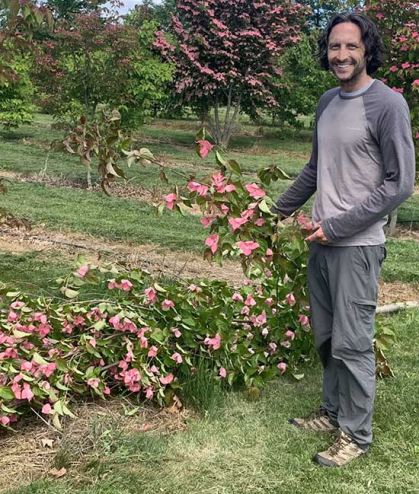
Molnar, also renowned for his hazelnut breeding program, displayed the dogwood varieties to visitors at the Rutgers Horticultural Farm 3 in East Brunswick. The new dogwoods were first cultivated at the farm. The original and largest living Scarlet Fire® dogwood can be seen there as well.
Dogwoods are popular ornamental trees prized for their vibrant spring blossoms, attractive foliage and fruit displays, as well as year-round visual interest. The Rutgers dogwoods are especially coveted for their beautiful blooms, and their resistance to disease, Molnar said.
Such new varieties are appreciated by consumers and greatly benefit the environment, according to Ed Overdevest, owner of Overdevest Nurseries in Bridgeton, N.J.
“New plant introductions like this provide nurseries, and ultimately consumers, with improved plant performance and disease resistance that add benefit and beauty to the world around us,” Overdevest said. “Rutgers provides important support for the New Jersey nursery and greenhouse industry which, surprising to many, generates nearly half of all agricultural production sales in the state.”
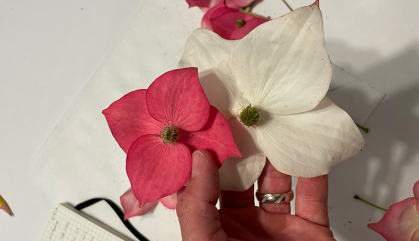
In addition to being a boon for commercial nurseries and garden centers, the hybrids, as with their forebears, are expected to become a popular addition to landscapes and gardens, adding a splash of vibrant pink and red colors in late May at a time when few flowering trees are in bloom. According to the New Jersey Nursery and Landscape Association, New Jersey’s green industry contributes more than $4 billion to the state’s economy annually.
Scarlet Fire®, Stellar Nova™ and Eternal Scarlet™ are all cultivars, a term that is a shortened form of “cultivated variety.” This means they are plants that have been selectively bred and propagated by humans to develop specific desirable traits. Such characteristics can include flower color and size, resistance to disease and adaptation to temperature extremes.
The Eternal Scarlet™ dogwood
Cultivars are clones, identical genetic copies of one original tree, and are propagated through methods such as rooting cuttings or grafting and budding. Such techniques ensure the new trees retain desired traits from the original parent plants and the end users such as homeowners acquire a plant with the traits they are expecting. In the case of the Rutgers dogwoods, the process produces healthy trees with highly attractive blooms perfectly adapted to New Jersey’s climate.
The new trees represent multiple generations of crosses and intercrosses between the native flowering dogwood, Cornus florida, and the Kousa dogwood, Cornus kousa, of East Asia. The hybrids, Molnar said, combine the best features of both parent species, offering improved disease resistance and adaptability combined now with breakthrough new bloom colors. New Jersey’s native flowering dogwood, while a definite favorite spring blooming landscape tree, is highly susceptible to disease, including powdery mildew, leaf spot and stem borers that can kill branches and entire trees. The new hybrids are highly resistant to these maladies.
Botanically speaking, dogwood blooms are not “petals” but are modified leaves known as floral bracts. The true flowers are tiny, inconspicuous, and light green, located in the center of the bloom in a tight cluster. The floral bracts reflect light and are visual cues to attract pollinating insects to the flowers in the center. The breeders have capitalized on this trait to develop landscape specimens that glow in sunlight.
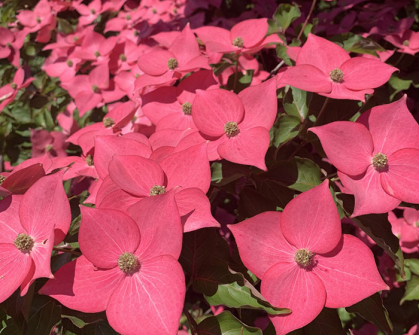
The Rutgers plant scientist Elwin Orton, now retired, initiated the dogwood breeding program at Rutgers in the 1970s. His work focused on developing disease-resistant hybrid varieties at a time when the disease known as dogwood anthracnose was decimating native Cornus florida. His efforts led to the creation of many successful hybrids, including the well-known Stellar™ series of dogwoods and Venus® dogwood well-loved for its giant white floral bracts.
Molnar continued and expanded Orton’s work, focusing on further improving disease resistance and the aesthetic qualities of dogwoods, zeroing in on developing dark pink bloom colors never seen before in the species. His breeding program emphasizes creating dogwoods that aren’t only resilient to environmental stressors but are unique and beautiful, too.
Consumers clamored for Scarlet Fire® dogwood almost immediately, Molnar said, after its limited introduction in 2016 and more widespread distribution by nurseries starting in 2017. Today, about 40,000 trees are sold each year around the United States and in the European Union.
“Scarlet Fire® dogwood represents a true breakthrough in color for the Kousa dogwood species,” Molnar said. “Never before has such a color existed in kousas; a typically white blooming species well known for its resiliency, adaptation and sun-reflecting beauty in the landscape. As such, it has become popular very fast for an ornamental tree. Commercial nursery owners say they still can’t keep it in stock and demand for the tree continues to grow each year.”
Rutgers benefits from the royalties on each tree sold, which support further research and breeding programs.
Stellar Nova ™ is a vigorous, upright-growing tree with bright white blooms that are much larger than those of other Kousa dogwoods available today.
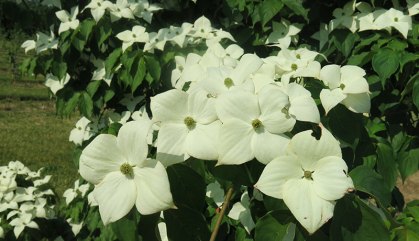
“Stellar Nova™ blooms at the same time as Scarlet Fire®, making it a perfect backdrop for the vivid pink flowers," Molnar said, adding that the tree’s leaves are thick and dark green, and stay healthy even in summer heat, without curling. “It's a ‘workhorse’ type dogwood that looks like Cornus kousa on steroids.”
Eternal Scarlet™ features medium to large overlapping blooms that are a unique red-pink color, darker than Scarlet Fire® and last weeks longer in bloom. In addition to the Rutgers school colors reference, its name refers to the fact that the hybrid’s blooms may last up to six weeks, longer than other dogwoods.
“By planting these trees, you can actually get an extension of that spring bloom of trees that everybody loves,” Molnar said. “Through a long-term investment in breeding, Rutgers has given a new splash of colors to our landscapes for Memorial Day weekend in New Jersey.”
Explore more of the ways Rutgers research is shaping the future.


